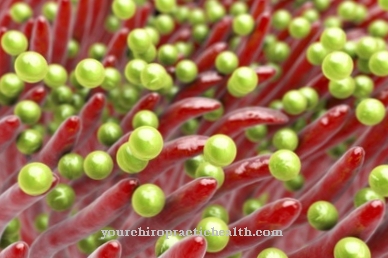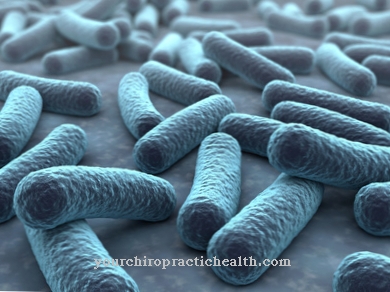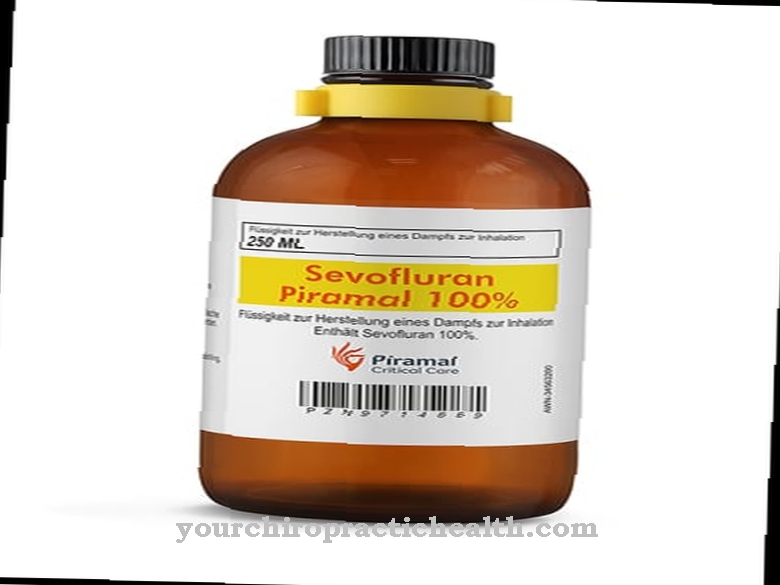At Triazoles they are special chemical compounds that are characterized by a ring-shaped structure. All triazoles always have the chemical formula C2H3N3. This formula indicates that triazoles are composed of five atoms. Each individual molecule consists of two carbon atoms and three nitrogen atoms.
What are triazoles?
Triazoles are generally aromatic compounds that are heterocyclic and consist of a five-atom ring. This ring is made up of carbon and nitrogen atoms.
From a chemical point of view, triazoles exist in two different isomeric forms. On the one hand there are the so-called 1,2,3-triazoles, on the other hand the 1,2,4-triazoles. Depending on how the nitrogen atoms in the triazole are arranged in the heteroaromatic five-membered ring, there are two isomeric triazoles. There are two so-called tautomeric forms. The only difference between these forms is the location of the nitrogen atom within the ring. A hydrogen atom is in turn bound to this nitrogen atom.
In principle, it should be noted that 1,2,3-triazoles can exist in two different tautomeric forms, the 1H-1,2,3-triazoles or the 2H-1,2,3-triazoles. The situation is similar with the 1,2,4-triazoles, of which both 1H-1,2,4-triazoles and 4H-1,2,4-triazoles exist.
From a pharmacological point of view, the triazoles are a separate category within the antimycotics. Antifungal drugs are special agents that are effective against fungi. The so-called triazole antimycotics include, for example, the active ingredients fluconazole, itraconazole, posaconazole and voriconazole.
Pharmacological effect
Basically, the triazoles are antimycotics. To understand how the triazoles work, it is therefore essential to take a closer look at the structure of fungi. The cell wall of the mushrooms is made up of so-called multiple sugars and the substance chitin. Chitin is not only found in mushrooms, but also plays a central role in the structure of insect shells.
Inside the cell wall of fungi there is a cell membrane, the main part of which consists of the substance ergosterol. This is where the cell membranes of fungi differ from those of humans. Instead, the substance cholesterol is present in human cells.
The mushrooms produce the important substance ergosterol for the structure of their cell membranes themselves. The production takes place step by step based on the substance squalene. All modern active ingredients and drugs against fungi attack the formation of the substance ergosterol. Just like the triazoles, the imidazoles also inhibit the third stage of the production of ergosterol.
For this purpose, the two active ingredients block the enzyme that is required for the conversion. As a result, not ergosterol but other building materials are produced. These defective substances impair the metabolic processes that are necessary for the reproduction of fungi. This is why the triazoles have a fungistatic or reproduction-inhibiting effect.
Certain triazoles lead to the fact that the building materials of the mushrooms are greatly changed. A proper structure of the mushroom membranes is therefore no longer possible. As a result, the inside of the cell emerges, which leads to the death of the fungus. Therefore, some triazoles also have a fungicidal or killing effect.
A typical representative of this group, the active ingredient fluconazole, has a fungistatic effect with therapeutic doses in most cases. In higher doses, however, it also shows fungicidal effects on some organisms. The substance intervenes in the conversion process of lanosterol into the ergosterol molecule. This leads to defects in the cell membranes of the fungal cells. In human cells, however, the effect of fluconazole is much weaker.
Basically, fluconazole is characterized by a relatively broad spectrum of activity. The substance is primarily effective against pathogenic fungi, for example Candida, Epidermophyton, Histoplasma capsulatum, Cryptococcus neoformans or Microsporum.
Medical application & use
Triazoles are used in many different areas of application. Numerous derivatives are used as drugs, particularly as antifungal agents. Frequently used drugs are for example fluconazole and itraconazole.
In addition to their use in medicine, triazoles are also used, for example, as crop protection agents. Here, too, benefits from their fungicidal effect. Typical agents include, for example, cyproconazole, epoxiconazole, hexaconazole, tebuconazole, and triadimenol. There are some plant diseases that only triazoles can be used to control.
In the context of the medical use of triazole antimycotics, both local and systemic application is possible. Antimycotics that are applied systemically, however, require careful study of the possible side effects. The antimycotic fluconazole, for example, is used in both topical and systemic therapy for various fungal infections, such as mucosal candidosis, systemic and serious mucocutaneous fungal infections.
Risks & side effects
As part of therapy with triazoles, several potential side effects and complaints are possible, which vary depending on the individual case. This sometimes leads to nausea and vomiting as well as itching on the skin.
In addition, liver function disorders sometimes occur. In addition, some of the urine changes color during the treatment. If there are side effects or other complaints during or after therapy with triazoles, a doctor should be consulted immediately and the drug should be discontinued if necessary.












.jpg)



.jpg)










.jpg)
